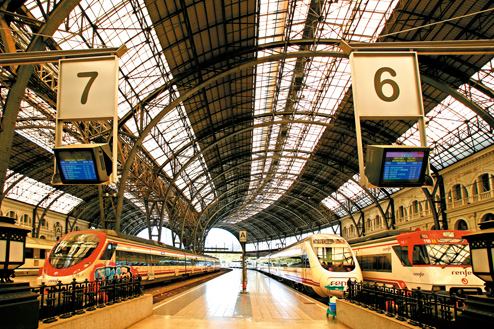Medieval Prosperity & the Catalan Empire
Despite occasional attacks by Arab pirates and a sacking by al-Mansur in 985, Barcelona’s star was on the rise. In 878, independence from Frankish influence was achieved. Guifre El Pelòs, aka Wilfred the Hairy, was the first Barcelonin count to rule an independent Catalonia (878-897). Under Ramon Berenguer III (1082-1131), Catalonia expanded as far north as Nice in France, and Ibiza and Mallorca were captured from the Moors. Catalonia now had an empire, and Barcelona was its capital.
Catalonia became united with neighbouring Aragon in 1137, though each region controlled its own affairs. Under Jaume I (1213-76), Valencia was captured. Sardinia, Corsica, Naples, the Roussillon region of south east France, and even Athens were soon added. Trade flourished. Catalan merchants had exclusive rights to gold from the Sudan, and Barcelona was a port to rival Venice and Genoa. During this period, steps were taken to lay the foundations of future democracy. An early system of law, the Usatges de Barcelona, and a city council, the Consell de Cent, were founded. The origins of today’s Generalitat can be traced back to a parliament formed in 1282. It was around this time that some of the major landmarks of today’s Barri Gòtic sprang up, many of them joining old Roman remains. The Palau del Bisbe is one example; you can look at Gothic stained glass windows while strolling through a Roman arcade. La Ribera’s Palacio Berenguer d’Aguilar is another, and now houses the Picasso Museum.
Catalonia became united with neighbouring Aragon in 1137, though each region controlled its own affairs. Under Jaume I (1213-76), Valencia was captured. Sardinia, Corsica, Naples, the Roussillon region of south east France, and even Athens were soon added. Trade flourished. Catalan merchants had exclusive rights to gold from the Sudan, and Barcelona was a port to rival Venice and Genoa. During this period, steps were taken to lay the foundations of future democracy. An early system of law, the Usatges de Barcelona, and a city council, the Consell de Cent, were founded. The origins of today’s Generalitat can be traced back to a parliament formed in 1282. It was around this time that some of the major landmarks of today’s Barri Gòtic sprang up, many of them joining old Roman remains. The Palau del Bisbe is one example; you can look at Gothic stained glass windows while strolling through a Roman arcade. La Ribera’s Palacio Berenguer d’Aguilar is another, and now houses the Picasso Museum.













